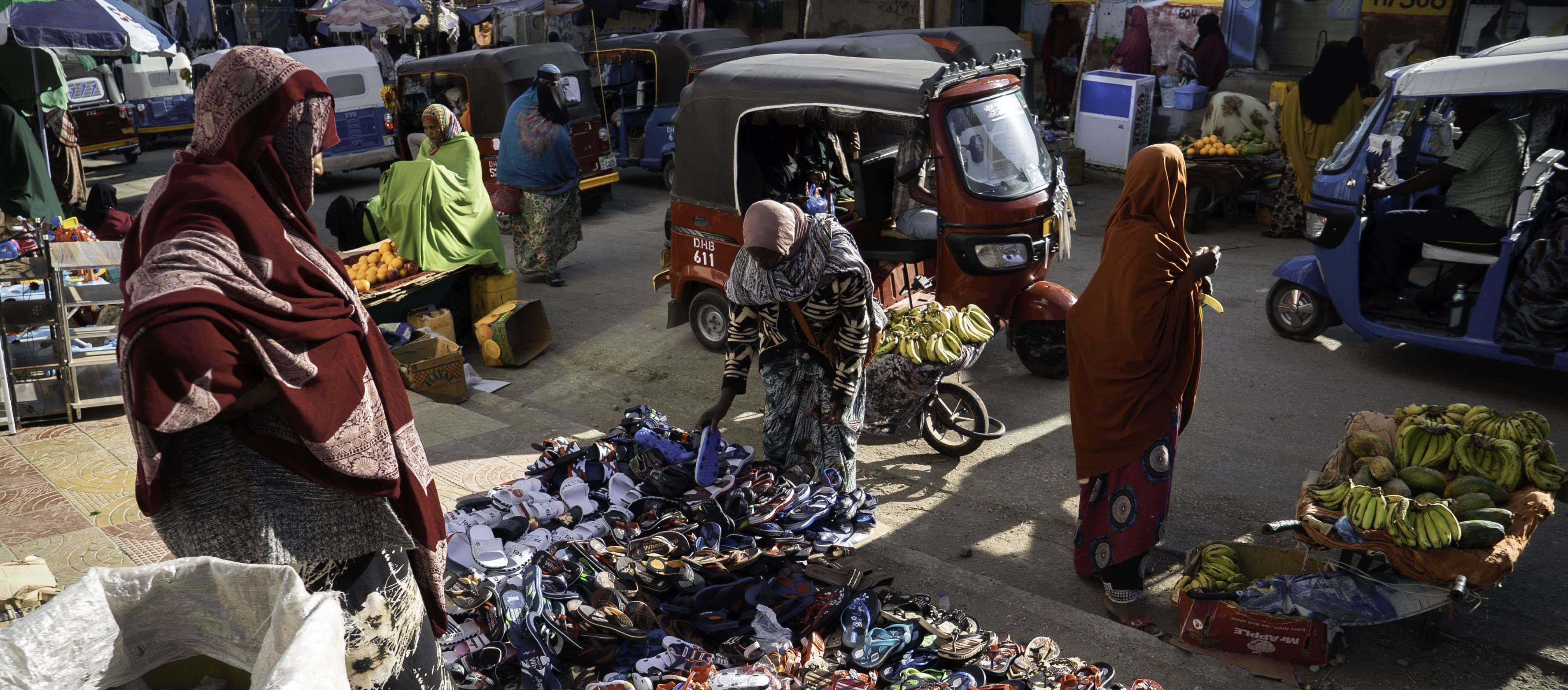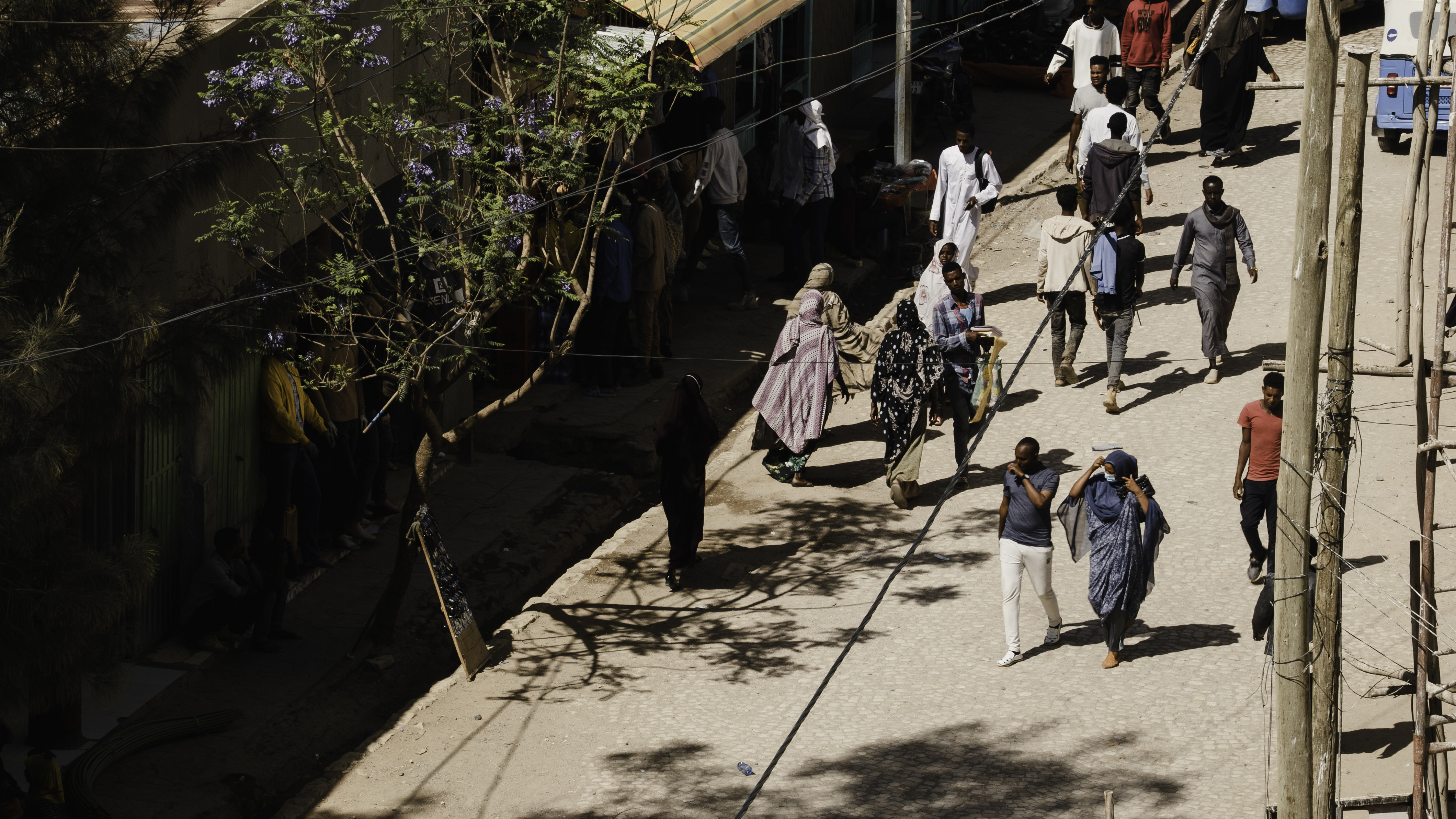Rural-to-urban migration is one of the major dynamics secondary cities across the developing world have to manage. The situation is especially acute in the Horn of Africa. Rural-to-urban migration is not the only reason secondary cities in the Horn of Africa are growing fast; natural growth and expanding jurisdictions are also factors. It is, however, by far estimated to be the main cause of growth in secondary cities.
With the support and partnership of the Swiss Agency for International Development (SDC), the Cities Alliance Global Programme for Cities and Migration has identified a promising approach to help cities in low-income countries better manage rural-urban migration: urban expansion planning.
From 23-24 November, Cities Alliance, SDC, the New York University (NYU) Marron Institute, and Jigjiga University organised a regional dialogue on rural-to-urban migration and urban expansion planning to share experiences in the Horn of Africa and how to replicate the approach.
The event included virtual speakers as well as in-person meetings in Addis Ababa and Kampala. It was attended by the national ministries responsible for urban development in Ethiopia and Uganda; 12 secondary cities in Uganda, Ethiopia, Kenya, and Somalia (nine of which are Cities and Migration Programme partner cities); and development partners including NYU, SDC, United Cities and Local Governments Africa (UCLGA), and Jigjiga University.
The dialogue was an opportunity for the cities and ministries to learn from each other and how to move forward with designing solid urban expansion plans that respond to the realities of each city and build partnerships to facilitate implementation. It also included concrete options for financing – a key concern for the cities.
A simple, cost effective urban expansion planning approach
For a decade, NYU, the government of Ethiopia, and Cities Alliance have pioneered an urban expansion planning approach that is simple and cost-effective. It starts with predicting city growth, then identifying land where the growth will take place, mapping environmentally sensitive areas for preservation, and finally planning the arterial grid and acquiring the land.

The approach began in 2013 with four Ethiopian secondary cities: Adama, Bahir Dar, Hawassa, and Mekelle. Since then, it has been tested in 18 cities in Ethiopia and is proving to have a real impact.
This planning tool has resulted in less informality, lower housing costs, more access to services, and a larger number of formal sector jobs because businesses had more land to expand.
For example, the city of Hawassa developed an urban expansion plan that allowed the city to allocate land in advance and lead its development. With its plan, Bahir Dar was able to open roads and allocate sufficient land for different purposes, including establishing an industry zone. In both cities, the plans helped create jobs and increase revenue.
Urban expansion plans have enhanced revenue in very good manner. For example, two revenues collected – the state and municipal revenue – when we provided the road, people started living on the urban expansion area and businesses started.
Financing urban expansion planning
The key success factor of urban expansion planning is securing the entire arterial grid within five years, which can be a daunting challenge for cities facing financial constraints. They need financing for surveying and demarcating the arterial roads, paying compensation, investing in basic infrastructure, and the human resources and equipment to enhance land supply capacities.
Based on Ethiopia’s experience, Ms Tsigereda Tafesse, Urban Expansion Planning Expert for Cities Alliance, outlined four concrete options for financing and implementing urban expansion planning.
- Revenue enhancement options. These include increasing down payment percentages ( except for residential plots intended for low-income citizens), differentiated pricing targeting different income groups, and incentives for early payments and property taxes within one year of awarding leases.
- Cost reduction options. Paving the arterial roads is one of the most expensive elements. Cities can undertake incremental street surfacing by beginning with well-maintained gravel roads, delaying paving costs for the first several years and strengthening cash flow.
- Municipal and regional financing facilities. Examples are City Expansion Revolving Funds (CERFs) that receive all down payments, early payments, and about 75% of lease payments in the first 10 years; compensation cost-sharing in which regions share the investment burden; and use of infrastructure and capacity development grants.
- Changes in legal frameworks. Cities should consider entering into Public-Private Partnerships (PPPs) with private land developers, especially early in the implementation process when investment capital may be scarce. Other options include establishing more favourable revenue assignments for cities so they have the autonomy to revise tariffs and fees and the use of municipal bonds and borrowing.
Participants were energised by the experiences shared during the dialogue, and it was clear there is strong political will in support of urban expansion planning. At the conclusion of the event, the Uganda delegation agreed on a set of resolutions to pursue urban expansion planning – taking the lessons learned from Ethiopia and adapting them to the Ugandan context.
As the Mayor of Koboko, Dr Sanya Kirk Fixer Wilson, noted:
I must say [the dialogue] has changed my thinking about physical planning if we are to have sustainable cities without slums....All am thinking is to start engaging the stakeholders to think of adopting of this new model of urban expansion planning.
Related articles:
Paul Romer: Cities Need to Make Room
The Challenge of Rural-urban Migration and Urban Expansion in African Secondary Cities





